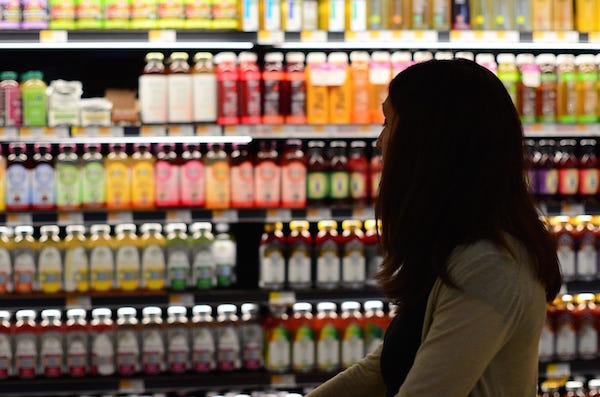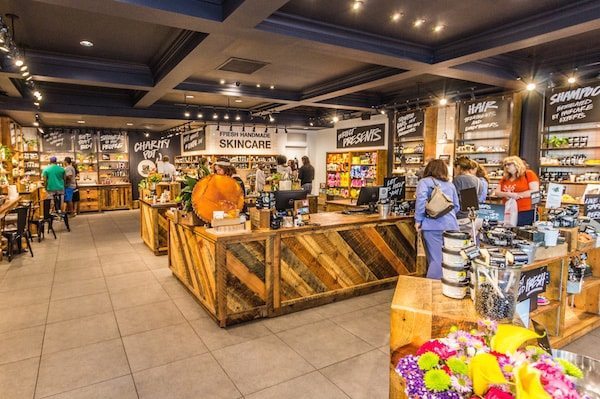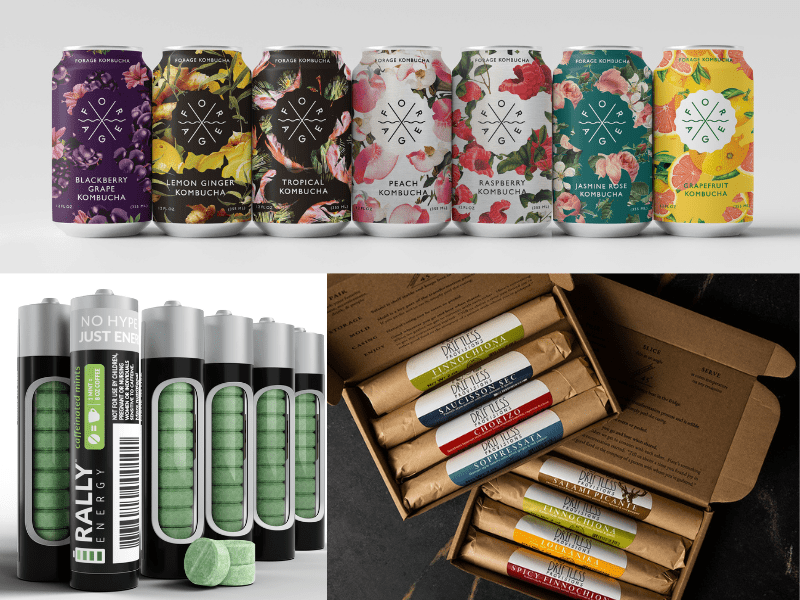[vc_row][vc_column][vc_column_text]
Everyone has a story to tell, and food businesses are no different. As consumers are demanding more transparency from food and beverage producers, those companies are having to communicate more and more about their supply chain and operations with limited space on their packaging. Sometimes communicating cleanliness and simplicity of ingredients, another consumer trend, means telling a story through simpler, cleaner design. Sometimes less is more.
Food businesses need to cater their stories to the audience they are speaking to. With consumers, this means developing in-depth personas about your target customer and using the language that speaks directly to their unmet need. Right now, consumers care about what is in their food and how their food choices affect other people’s lives. So, it makes sense that new brands would include this in their messaging.
Lenders and investors care about those things too, but they need to know that the businesses they are considering capitalizing will help them achieve their financial goals, and different funders have different financial goals. Bankers care more about profitability than they do about revenue and would rather see a business have a high net income percentage than high sales growth. Investors in national brands want to see high sales growth and are less concerned about profitability until the year before the sale of the national brand.
That means that when speaking to funders, entrepreneurs need to tell the story of their business model, their revenue model, and their brand positioning i.e. the story they reinforce with consumers. A convincing story to funders has numbers and realistic assumptions about where their business is going and how that funder’s capital will help the business get there. When food and beverage businesses become skilled at telling the right story to the right people, magical things can happen.
And now, our roundup of the best food and beverage finance news, events and resources from around the web…
Business Model Insights
- Top 3 Financial Tips From Food Entrepreneurs (Small Food Business) – “#1 – Know your product costs. To be successful in this industry you need to have a to-the-penny understanding of how much each product costs you to make. Only then can you accurately price your products. #2 – Have a plan for who is going to be in charge of your bookkeeping. Your financial records are the backbone of your business – both for your own understanding of what is happening in your business and for tax purposes, so whether you hire an outside bookkeeping to keep your records for you or plan to do it yourself, make a plan and stick to it. #3 – Know how to read your financial statements – and do it! These statements help you understand, among other things, how your business is performing, what products are selling better than others, and can help you see whether the amount you’re putting into sales generation and marketing is showing a return-on-investment.”
- 4 reasons why outsourcing financial resources is a smart bet (New Hope Media)
- Lidl’s US business model will evolve, says Bernstein (Food Navigator)
Raising Capital
- How To Pitch to Food-Friendly Investors (Pie Shell) – “Yes, story telling is important. And yes, we all love companies with a good social cause. But remember that the end goal of a pitch is to get one step closer to funding. You’d be surprised how many people neglect to mention their business model, even when they’re standing in front of the people holding the purse strings. Your revenue model should be explicitly stated in the pitch, leaving no question as to how an investor will get his or her money back — and make a little extra.”
- Food Incubators and Other Ways For Startups To Engage with Corporates (AgThentic)
- The stages and series of funding (New Hope Media)
 CPG/National Brands
CPG/National Brands
- National brands may lose out as private label products grow (Food Dive) – “Private label brands currently have a 17% market share in the United States. As more chains invest in diversifying and improving their private label lines, Kantar Retail’s grocery analysts have predicted private label growth between now and 2022 will outpace the previous five years. As retailers start stocking more private label products, shelf space for manufacturers’ brands will come at a premium, meaning volumes are likely to drop and competition is likely to increase. CPG manufacturers should continue their innovation pipeline and work to be the first to create (or acquire) the next big product. While private label brands may attempt to emulate those products, consumers will likely be able to associate the item with the national brand. Also, some national brands have a backstory that private label counterparts cannot compete with. Playing up that story on packaging and in marketing campaigns may help reinforce that the brand that has been trusted for generations still deserves consumer trust today.”
- 2017 Consumer Packaged Goods Trends (PricewaterhouseCoopers)
- 3 pieces of data every CPG entrepreneur should have on hand (New Hope Media)
Market Trends
- Just how important is ‘natural’ to consumers when making food decisions? Here’s a look at the research (New Hope Media) – “Natural has long been an effective food label claim, but with such widespread use and such little regulation around it, it’s not always clear what exactly about it consumers are drawn to. New research has found, first and foremost, that natural has been defined and measured using three main categories: how the food is grown (farming practices, with emphasis on organic and local production); what technologies and ingredients are used during processing; and the properties of the final product, referring mainly to things like healthiness, tastiness, freshness and eco-friendliness.”
- Study: Nearly all consumers find transparency in food and beverage important (Food Dive)
- Infographic: Shopper insights and Decision-making at shelf (New Hope Media)
Farming and Ag Tech
- Changing the Farmer’s Role in AgTech Commercialization (Ag Web) – “The disconnect between those who are creating new innovations and the farm is dramatically lowering the probability of success for new agricultural ventures, which is in turn giving investors pause and is certainly not accelerating adoption quickly. One of the biggest issues with this divide between innovation creation and the farmer is that often the new technology is not tried in real farm conditions, nor is it tried early enough to contribute towards make-or-break decisions on whether or not to continue to invest in the new idea. This means a lot of investor capital is being deployed for too long on dead ends. In fact, this problem is so bad the many who are developing new technologies, even those working within traditional agricultural research institutions, increasingly view the farmer as a “first customer” but not as an innovation partner.”
- What you need to know about the Dairy Pride Act (New Hope Media)
- USDA and SCORE Launch Innovative Mentorship Effort to Support New Farmers and Ranchers (USDA)
Deals/M&A
- A Balancing Act: In the food VC arms race, it’s ‘buy or be eaten’ (Food Dive) – “In today’s food industry, legacy status is no longer indicative of category success. Growing consumer preference for hyper-local and environmentally and ethically conscious products, with short, transparent supply chains has created an environment where emerging brands can grow into fierce competitors. Rather than try to beat these small, nimble companies, many major brands are choosing to buy them. As a result, nearly every big food company has launched a venture capital arm, giving legacy brands an opportunity to snag up-and-coming players before they become too big of a threat, or a competitor gobbles them up first. Ten years ago, the big food companies wouldn’t even look at an acquisition unless the sales volume was $100 million or more. Now, they’re dipping down into companies that have as low as $10 million in volume because they realize they have to dig into this innovative trend that’s occurring with these small companies to be able to be competitive today.”
- Craft Beer, Brought To You By Big Beer (NPR)
- What’s in store for food and beverage M.&A. in 2017? (Food Business News)
Industry Events
- Steps to Start a Food Business (WWBIC) – Free, 8-19 in Madison, WI
- FabCap Accelerator Applications – Free, Applications due 8/21
- Natural Products Expo East (New Hope Network) – $, 9/13 – 9/16 in Baltimore, MD
- Strong Women, Strong Coffee (WWBIC) – $, 9-22 in Madison, WI
- Basic Food Safety (FaB Wisconsin) – $, 10/4 – 10/6 in Milwaukee, WI
- Advanced Food Safety (FaB Wisconsin) – $, 10/26 – 10/27 in Milwaukee, WI
[/vc_column_text][/vc_column][/vc_row]







